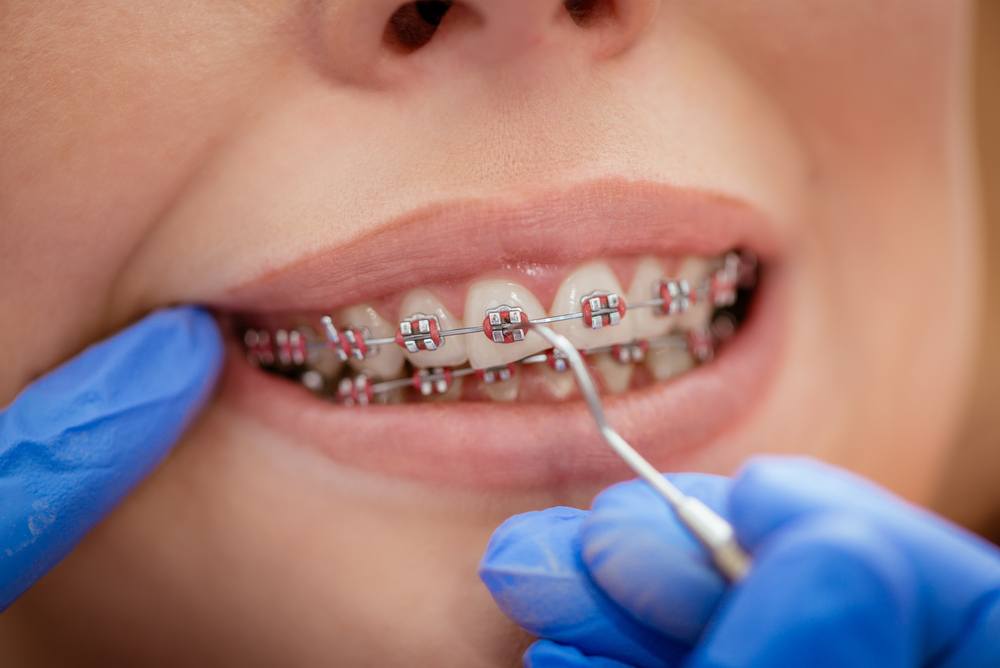How Cumming Orthodontics Addresses Common Braces and Invisalign Problems
How Cumming Orthodontics Addresses Common Braces and Invisalign Problems
Blog Article
Comprehensive Overview to Orthodontics Procedures for Fixing Oral Imbalances
Understanding the ins and outs of each procedure, including their systems, benefits, and possible disadvantages, is crucial in making notified choices about one's orthodontic treatment. As we browse via the thorough overview to orthodontic procedures for correcting oral misalignments, the detailed information of each technique will unfold, shedding light on the course towards a unified and practical oral positioning.
Orthodontic Procedures Review

Along with clear aligners and standard braces, orthodontists might likewise recommend various other interventions like headwear, palatal expanders, or retainers to attend to particular alignment concerns (braces). These procedures are customized per client's distinct needs and may involve a mix of treatments to accomplish the desired results. Regular modifications and monitoring are important components of orthodontic therapy to make sure development gets on track and to make any needed alterations along the method. By undertaking orthodontic procedures, clients can not just achieve a straighter smile however additionally improve their overall oral health and wellness and feature.
Conventional Braces: How They Work
When taking into consideration orthodontic therapies for dental imbalances, typical braces stand apart as a time-tested method for dealing with teeth placing. Conventional dental braces include brackets, wires, and bands that interact to use constant pressure on the teeth, gradually relocating them right into the desired placement. The braces are connected to the teeth using a special adhesive, and the cords are threaded via the brackets. By adjusting the stress of the cables, orthodontists can manage the direction and pressure put on each tooth, assisting them into appropriate alignment over time.
As stress is used to the teeth via the dental braces, the bone bordering the teeth is improved to sustain the brand-new tooth placements. Patients will need regular adjustments at the orthodontist's office to guarantee the braces continue to apply the appropriate pressure for effective teeth motion.
Undetectable Aligners: Advantages And Disadvantages
These clear, personalized trays are essentially unnoticeable when worn, making them an appealing option for people looking for an extra cosmetically pleasing orthodontic therapy. Clients can remove the aligners prior to consuming or cleaning their teeth, decreasing the threat of food obtaining stuck in the device and simplifying the cleansing procedure.

Surgical Orthodontic Options
Surgical interventions in orthodontics existing viable choices for addressing intricate oral misalignments that may not be properly fixed via conventional orthodontic treatments. While unnoticeable aligners and typical braces can deal with many orthodontic issues, particular cases need surgical intervention to accomplish ideal outcomes. Surgical orthodontic options are commonly suggested for serious malocclusions, considerable jaw discrepancies, and situations where the underlying bone structure needs adjustment to achieve proper alignment.
One common surgical orthodontic procedure is orthognathic surgical procedure, which involves repositioning the jaws to correct useful problems such as problem talking or chewing. This surgical treatment is commonly done in partnership with an orthodontist that helps straighten the teeth before and after the procedure. Surgical orthodontics might likewise involve treatments to subject affected teeth, remove excess periodontal cells, or reshape the jawbone to develop an extra unified facial profile.
Prior to thinking about medical orthodontic alternatives, individuals undergo a comprehensive analysis to identify the need and prospective advantages of such interventions. cumming invisalign. While surgical treatment might seem daunting, it can substantially improve both the function and visual appeals of the smile in situations where conventional orthodontic treatments fail
Retainers and Post-Treatment Care

Post-treatment treatment entails following the orthodontist's directions faithfully. This may include correct dental hygiene methods, participating in follow-up appointments, and using the retainers as suggested. Failure to follow post-treatment care directions can cause regression, where the teeth slowly return in the direction of their initial positions. Constant retainer wear, great dental health, and routine dental exams are important for keeping the results attained through orthodontic read the full info here surgical treatment and ensuring the long-term security of the corrected oral placement.
Verdict
Finally, orthodontic treatments supply various options for dealing with oral imbalances. Standard dental braces use steel braces and cables to change teeth right into appropriate positioning. Unnoticeable website here aligners offer a more very discreet option but might not appropriate for all cases. Surgical orthodontic options are readily available for a lot more severe imbalances. Retainers are frequently utilized post-treatment to keep the brand-new alignment. On the whole, orthodontic treatments can effectively boost dental health and visual appearance.
As we browse via the thorough overview to orthodontic procedures for fixing oral imbalances, the complex information of each technique will unravel, shedding light on the course toward a unified and practical oral placement. - aligners
One of the most common orthodontic therapies is the usage of dental braces, which consist of metal braces and cables that apply mild pressure to slowly move teeth into the preferred position.When taking into consideration orthodontic treatments for oral misalignments, standard dental braces stand out as a time-tested technique for dealing with teeth positioning. In addition, invisible aligners may not be appropriate for intricate orthodontic issues that need even more significant teeth motion, as they are generally suggested for light to modest situations. Retainers are personalized orthodontic gadgets made to hold teeth in their corrected settings after the conclusion of orthodontic treatment.
Report this page